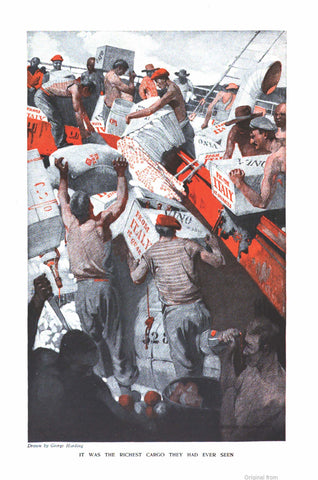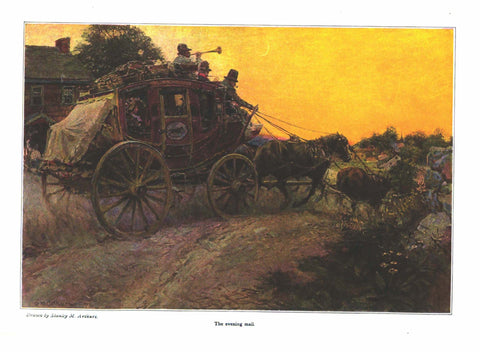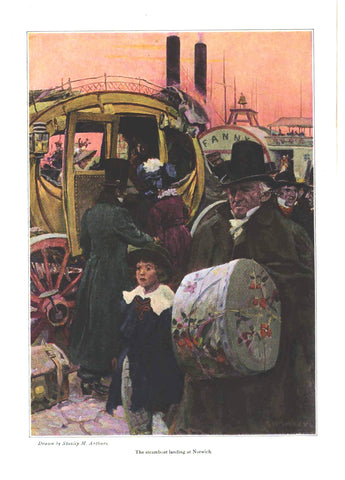Howard Pyle story illustration for "Harper's Monthly" (1907): beautifully framed antique
$225.00
Illustration from Howard Pyle's Book of
Compiled by Merle Johnson from works
New York. Harper & Brothers. 1921.
Harper’s Monthly Magazine. Vol. 115.
IMAGE INFORMATION
Matted & Framed: H 15.25” x W 12.50”
Packaging and shipping
.
An interesting footnote to Howard Pyle’s pirate art is that he was also the author for most of the stories in which his illustrations appeared. Because he did, HP literally invented “Pirates” as we know them today!
We have Merle Johnson to thank for putting HP’s pictures in a place we can find them. It was Johnson, you see, who created Howard Pyle’s Book of Pirates, which Harper & Brothers published a decade after the artist’s death. Johnson is unknown today, but the year before he created Pyle’s pirates book, the Publishers Weekly commended him for producing a bibliography “on Mark Twain” and for his “bibliographical check-lists” of James Branch Cabell and Frederick M. Hopkins, who was then “the editor of the rare book pages of the Publishers’ Weekly.” In other words, Johnson was a bookman, and he admired the work of another great bookman, Howard Pyle, enough to create an accessible record of one of his special interests. HP signed a sketch he drew in 1903, “Ye Pirate Bold, as imagined by a Quaker Gentleman in the Farm Lands of Pennsylvania.”
To find the art he put in his Pirate biography, Johnson sifted through stories Pyle had written and published twenty, thirty, and early forty years before. Johnson’s source included “Blueskin, the Pirate,” which appeared in the December 1890 issue of The Northwestern Miller, and “Captain Scarfield,” which appeared in the magazine’s December 1900 issue. The Century Company published a book-version of Jack Ballister's Fortunes in 1895. This was after St Nicholas published it in serial form, which it did beginning in April 1894. “Dead Men tell No Tales” appeared in the 17 Dec 1899 issue of Collier’s Weekly. “The Burning Ship” appeared in Collier’s 10 December 1904 issue. Pyle produced pirate pictures for stories Johnson did not mention. For example, “The True Captain Kidd,” written by John Denison Champlin, appeared in Harper’s December 1902 issue. “The Fate of a Treasure-town,” which Pyle wrote, appeared in Harper’s Monthly’s December 1905 issue.
Johnson’s collection provides an excellent record of how Pyle changed his style to keep up with advances in image reproduction technology. Over these thirty–five years, publishers replaced continuous tone imaging, which combined lithography and etching, with a variety of photo-mechanical processes. During the 1890s publishers reproduced B&W photographs first with a process called “photography on the block” then with “binary halftone imaging.” The pictures people today admire most are colorized images, which were reproduced using “four color halftone” processes that became commercially available in the final years of the 19th century. During the first decade of the 20th century, Harper’s, Scribner’s, and Collier’s all began to fill their pages with color images. Since they were popular with the reading public, Pyle began producing his illustrations in oils, which he used along with the pen and ink he had been using since the mid-1870s.
HP was near the end of his long career when he wrote and illustrated “The Rudy of Kushmoor.” He was not a color and nature artist like, for example, his remarkable student N. C. Wyeth. But because he was so gifted, and because he understood light and dark, he was able to create the brilliant scenes he did for this, his final story about pirates.








